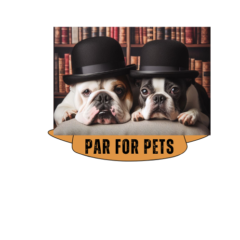
I’ve always been fascinated by Great Danes. These towering canines, often referred to as ‘gentle giants,’ have a history as grand as their stature. Originally bred for hunting and guarding, Great Danes have evolved into affectionate family pets that exhibit a noble and peaceful demeanor.
One look at a Great Dane and you can’t help but be in awe of their impressive physique. Standing up to 32 inches at the shoulder, they possess a regal bearing and powerful build. Yet, for all their size, a well-bred Dane has a calm grace and is known for a friendly, gentle nature.
While it’s common to assume that larger dogs might be overbearing or aggressive, Great Danes often defy these expectations. They are generally patient and loving animals, making them excellent companions. Despite their intimidating size, they’re not known to be high-strung or overly aggressive without cause.
Many people are surprised to learn that Great Danes can fit well into various roles beyond being a household pet. They’ve been therapy dogs, involved in search and rescue, and even famous as iconic mascots and characters in movies and literature.
I invite you to turn any preconceived notions about Great Danes on their head and see them through the eyes of those who’ve come to love them. They are not just dogs; they are a blend of history, dignity, and affection that can enrich the lives of those around them.
Caring for Your Great Dane: Tips for a Healthy and Happy Dog
Great Danes require a special approach to their diet. They are prone to bloating and gastric torsion, so small, frequent meals are imperative rather than large, infrequent ones. High-quality food that meets their nutritional needs for a large breed dog at each stage of life is essential.
Physical activity is just as crucial. While puppies should not be over-exercised to protect their developing joints, adults need regular exercise to stay fit and avoid obesity. Coordinate with a vet to plan ideal exercise routines that can include walks, playtime, and mentally stimulating games.
Health checks play a significant role in your Great Dane’s life. Common issues like hip dysplasia, heart conditions, and bone diseases can often be managed or mitigated with early detection. Yearly vet visits for comprehensive check-ups are a baseline, and it’s wise to become familiar with symptoms that warrant immediate medical attention.
Living with a Great Dane means adapting your space. These dogs need room to stretch out and a comfortable bed to support their large frames. Your home should be a safe space where they can move around freely without risk of injury from cramped living areas.
Finally, training and proper socialization are key. Despite their size, Great Danes can be sensitive and responsive to positive reinforcement techniques. Effective training helps them become well-mannered companions. Regular socialization helps prevent anxiety and aggression, making them comfortable around other animals and people.
Becoming a Responsible Great Dane Owner: What You Need to Know
I cannot stress enough the importance of commitment when adding a Great Dane to your family. They are more than a pet; they’re a long-term commitment that involves careful consideration of time, space, and financial resources.
These gentle giants need ample room to stretch out, play, and relax, echoing their need for a physical environment that accommodates their large size. I recommend assessing your living space to ensure it’s adequate for a Great Dane’s comfort.
Your time is just as valuable as your space. Great Danes thrive on human connection and require consistent training, exercise, and companionship. I advise future owners to plan their schedules to accommodate quality time with their dog.
Let’s talk finances. Preparing for the costs associated with owning a Great Dane is essential. From nutritious food to veterinary care, including potential health complications specific to the breed, the expenses can add up. A smart move is to create a budget before bringing a Great Dane home.
Interactions with your massive friend should always be supervised, especially around children and newcomers. Their size alone can be daunting, so it is critical to teach everyone respectful and safe ways to engage with the dog.
Vet visits should be as routine as your morning cup of coffee—regular, expected, and necessary for the dog’s well-being. Keeping an ongoing record of medical history will help any veterinarian provide the best care possible.
If your heart is set on a Great Dane, consider adoption or rescue. Many Great Danes are in need of a loving home, and choosing to adopt can be a fulfilling experience. Do your research and ensure that the choice you’re making is informed and sound.
Finally, reaching out to the community, whether through in-person meet-ups or online forums, can provide valuable support. Sharing experiences with fellow Great Dane owners can enrich your journey with your dog, offering practical advice and emotional support. Shop for treats for your best friend by clicking here https://www.amazon.com/s?k=dog+treats&crid=38SKMK1BYN8UF&sprefix=dog+treats%2Caps%2C103&ref=nb_sb_noss_1#:~:text=https%3A//amzn.to/3Uduz7R
